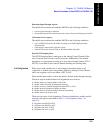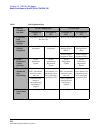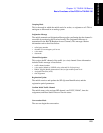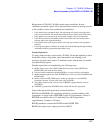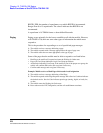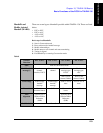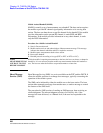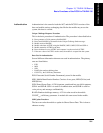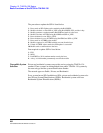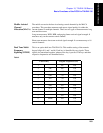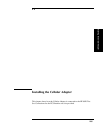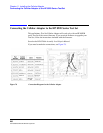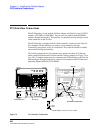
281
Chapter 10, TIA/EIA-136 Basics
Basic Functions of the DCCH in TIA/EIA-136
TIA/EIAa TIA/EIA-136 Basics
Authentication Authentication is the same for both the ACC and the DCCH. It consists of the
base and mobile stations exchanging data. Before the mobile may access the
system, this data is verified.
Unique Challenge-Response Procedure
This is the basic procedure of Authentication. The procedure is described below.
1. Base generates a 24-bit pattern called RANDU.
2. Base sends RANDU to the mobile in the Unique Challenge Order message.
3. Mobile receives RANDU.
4. Mobile calculates AUTHU using the RANDU, MIN1, MIN2, ESN and SSD-A.
5. Mobile transmits AUTHU to the base.
6. Base calculates its own AUTHU and compares it to the received AUTHU.
7. If the two values of AUTHU are the same, the mobile is accepted into the system.
Data Used in Authentication
Several different information elements are used in authentication. The primary
ones are listed below.
•ESN
•MIN
• SSD
• RAND, the random challenge data
• COUNT
s-p
, the Call History Parameter
ESN: Electronic Serial Number. Permanently stored in the mobile.
MIN: Mobile Identification Number. Consists of two parts, MIN1(24 bits) and
MIN2(8 bits).
SSD: Shared Secret Data. A 128-bit pattern, partitioned into two 64-bit patterns,
SSD-A and SSD-B. SSD-A is used for Authentication, and SSD-B is used for
voice privacy and message confidentiality.
RAND: Random challenge memory. A 32-bit value stored in the mobile.
COUNT
s-p
: call history parameter. A modulo-64 count stored in the mobile.
SSD Update Procedure
The base can order the mobile to update its Shared Secret Data. This is done to
enhance security.



